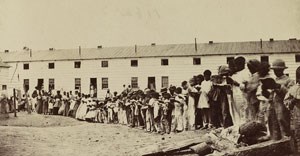
Library of Congress
Reconstruction was a process that took place in communities throughout the nation. Many units of the national park system, as well as sites managed by state, local, and private entities preserve locations and stories that tell the story of this crucial transition from slavery to freedom in the aftermath of Civil War. You can learn how to become part of the Network on our Join the Network page.
To navigate this listing, either scroll to the state you are interested in, or select the state from the drop down menu below. Please contact the individual sites for information about planning your visit. At the bottom of this page find the Network photograph gallery, which includes photos from each site. For questions regarding the network, contact us.
Listing of Network Sites
| Site | City | State | Website |
|---|
Network Site Photographs
Last updated: September 5, 2025
